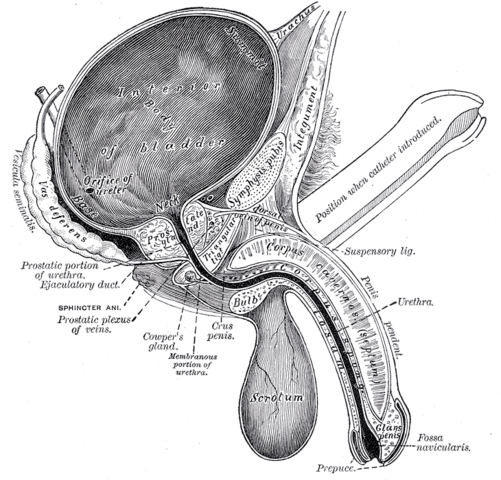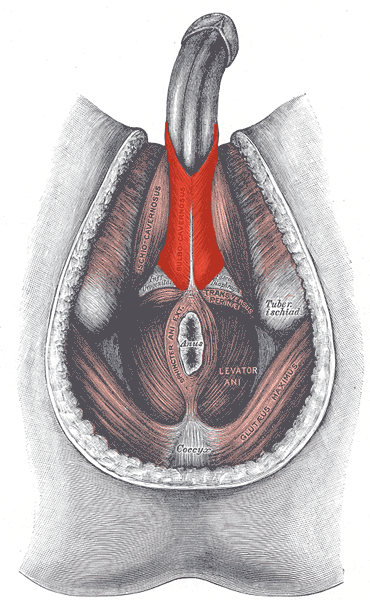Ejaculation may feel like a glorious mess, as uncontrollable as an avalanche or a runaway train. In reality, it’s a tightly choreographed court dance: integrating three different branches of the nervous system, triggering cascades of contractions in smooth and striated muscles, all accompanied by the electrical storm of orgasm. Here’s how it works.
Sexual Feedback
Ejaculation is the endpoint of a process that begins with a touch. Skin covering the shaft and glans of the penis is filled with nerve endings sensitive to pressure and vibration. Stroking that skin sends signals to the brain that say ‘sexytime!”
The brain bundles those signals into the gestalt of information that it’s getting from other parts of the body: eyes, nose, imagination, and if sexual arousal develops, it responds by making that penile skin even more sensitive to touch. More touching further increases sensitivity, in a positive feedback loop that can build to a show-stopping involuntary eruption.
When enough stimulation trips arousal over into orgasm, it also triggers a storm of activity in the three ejaculatory centres deep in the brain. These areas, in the hypothalamus and the midbrain, fire off a pattern of impulses to coordinate the release of sperm from the testes, the creation of semen, and tie the final contractions tossing semen out of the body to the feelings of orgasm.
Loading the Charge
Before the spurting can begin, sperm need to be brought out of storage and put in position. And despite the tails, they can’t yet swim for themselves.

Instead, smooth muscles in the walls of male reproductive organs contract in a coordinated wave. The conveyor-belt like movement takes concentrated masses of sperm from the epididymis where they matured and dumps them into the urethra at the base of the penis. Along the way, they pass by a series of glands (like the seminal vesicles and the prostate) which each squeeze out specialised fluids that dilute the sperm and create the complex goo we call semen.
Semen accumulates at the back end of the penis, inside the base of an erectile structure called the corpus spongiosum (or in older papers, the corpus cavernosum urethrae). The corpus spongiosum is the odd man out of the three erectile structures inside the penis: unlike the two erection-producing corpora cavernosa that run alongside it, the corpus spongiosum is softer and flares at its tip to form the glans. Its base also swells slightly, forming a structure called the urethral bulb.
The urethra plunges into the middle of the bulb in a sort of turducken of sexual tissues: urethra at the center, erectile tissue surrounding it, all wrapped in layers of muscle. As semen fills the urethra, pressure starts to build in the bulb. The muscular conveyor belt from the reproductive ducts keeps pushing more fluid forward, and the bladder prevents back-flow by sealing its opening into the urethra. (The fact that the bladder closes up shop is also why urine doesn’t spurt out at orgasm.)
With nowhere else to go, the semen inflates the urethral bulb like a water balloon. As the bulb swells to 2-3 times its normal diameter, it adds “I’m full” signals to the erotic mix.
The whole process — called emission — has taken about 3 seconds, and it’s been paired with a growing feeling of inevitability. Now we’re ready for the big finish.
Past the Point of No Return
This is the point at which wads are shot, loads are dropped, rocks are shot off. The euphemisms are telling: the main event — expulsion — is completely involuntary, a reflex run by the spinal cord, no brain input needed. And once it starts, it can’t be stopped.

The signal that tells male genitals the big moment has arrived comes from a group of neurons near the base of the spinal cord called Onuf’s nucleus. Once triggered, their signals take control of the muscles at the base of the penis and touch off a series of strong involuntary contractions.
One of the muscles in question, the bulbospongiosus (also called the bulbocavernosus in old texts), surrounds the entire urethral bulb and the rear of the corpus spongiosum. A second surrounds the urethra proper. Together, they form a muscular pump that can throw semen out of the body with a surprising amount of force.
When the right signal arrives, the pumping starts. Both muscles contract together rhythmically, raising the pressure in the urethral bulb in pulses and pushing semen through the urethra in spurts. Each high pressure push is followed by a short period of relaxation which lets the urethral bulb refill with semen. Sensory feedback from the pulsed contractions tie into (and may intensify) the brain’s orgasmic cascades.
The pressure change in the urethral bulb is substantial: each contraction also creates sympathetic pressure peaks in the blood inside the erect corpus spongiosum. The first few squeezes are so forceful that semen doesn’t simply travel the 12 to 15cm of the penile urethra to its opening in the glans — the first few spurts can fly 30 to 60cm through the air beyond it.
The muscles follow up the first three or four strong contractions with several seconds of slower, weaker pulses, moving between 2 to 5 milliliters of semen to the outside world. Once that’s done, at least for a while, all that’s left is the mopping up.
[Purohit and Beckett 1976 [Shafik 1995 [Keast 1999 [Giuliano and Clement 2005 [Schober and Pfaff 2007 [Sengelaub and Forger 2008 [Jones and Lopez 2014 [Puppo and Puppo 2015]]
Top image GPS via Flickr [CC BY 2.0; other images Henry Vandyke Carter from Grey’s Anatomy (1918) via Wikimedia]
